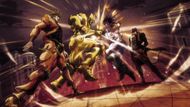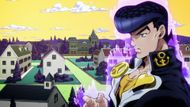In the world of anime, there is one title known as JoJo’s Bizarre Adventure that has made its name for being the most flamboyant series of all time. The creator delivered a memorable plot, character design, and thematic depth packed in one franchise. There are currently nine parts, and all of them have introduced a new JoJo at the center of the story. Interestingly, every JoJo is different and unique to themselves; it is like they are a reflection of which era they are from.
Fans have taken notice of how every JoJo has been given a unique sense of style, strength, and narrative presence. It does not just talk about their character design; Araki has also given a different outlook on life and philosophy to his characters. Sometimes they might be deep into family values, while other JoJos might be fighting against corruption.
The series itself is proof of how the creator himself has evolved across decades. When fans were initially introduced to Jonathan Joestar, he was a loyal and kind-hearted character. His moral compass did not have a gray scale. Things would either be good or evil. Physically, his character design was a direct reflection of a generic shonen hero.

His character set a foundation for the meaning of heroism. Moreover, Jonathan Joestar also establishes the Joestar legacy: fight for what’s right, even if it kills you. Although this foundation started having cracks when Araki introduced Joseph Joestar (Battle Tendency) and Jotaro Kujo (Stardust Crusaders).
These characters started to rely more on their wit than on just using brute strength and hoping for the best. And unlike Jonathan, these characters started having a rebellious streak. And the shift in the world of JoJo’s Bizarre Adventure took place. Now, the heroes of the series did not have to be extremely virtuous.
They could be tricksters, rule-breakers, and smart-mouths; the only redeeming point is that the original goodness in their hearts sets them apart from the antagonists. By the third generation of the Joestar family, Araki has made changes in their physical appearance. While Jotaro is muscular, his character is leaner in comparison to the last two generations of Joestars.
Additionally, these characters were also given extravagant costumes, indicating that JoJo’s Bizarre Adventure was no longer just about strength; it was about style and attitude. It is very evident by the time Josuke Higashikata appears in Diamond Is Unbreakable.

By now, almost everything has changed about the show. While it maintains bizarre stories that oddly make sense, the series is more focused on aligning with subcultures and individuality. For instance, Josuke is sensitive about his hair; he cares about his style and does not hesitate to be aggressive towards anyone who makes fun of it.
Then came two wildcard characters who redefined everything about JoJo’s. They are Giorno Giovanna in Golden Wind and Jolyne Cujoh from Stone Ocean. Giorno is the son of Dio (when he had taken over Joestar's body), and Jolyne is the only female character.
It is important to note that while there are other JoJo characters introduced, these two were the final characters from the original timeline. Visually, both of them were designed to look flamboyant to the core. And their sense of justice is rooted in their own code rather than any inherited Joestar values.
Was the fading moral compass planned in JoJo’s Bizarre Adventure?

As the lineage continues, it becomes evident that the Joestars’ moral compass drifts. Jonathan was righteousness personified. Joseph was a cheeky rogue. Jotaro was cold but righteous. But from Giorno onward, the JoJos act based on personal codes. Each JoJo makes questionable choices, but not without purpose. It’s no longer about saving the world; it’s about surviving it.
This isn’t degradation; it’s evolution. The Joestars now mirror the real world, where choices aren’t always clear, and morality is often circumstantial. Their hearts remain in the right place, but the decisions they make are no longer classically heroic; they’re deeply human.
In conclusion, JoJo’s Bizarre Adventure is a multigenerational epic in the form of an animanga series. It has beautifully captured how the new generation has adapted to the new changes. Their strength has moved from physicality to psychological resilience. Their stories have shifted from good vs. evil to complex journeys of identity and survival.
